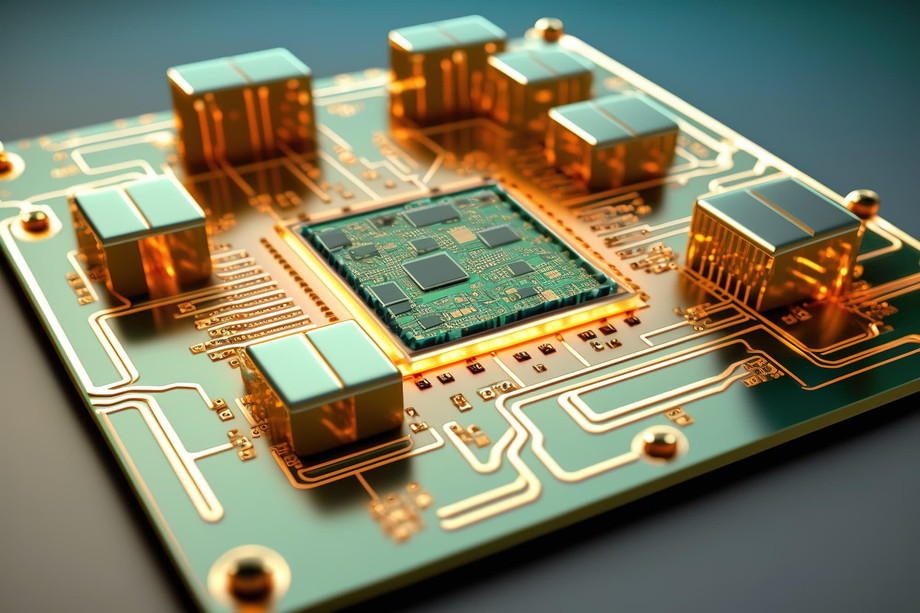As industries continue to evolve and embrace the transformative power of automation, the role of robotics has become increasingly prominent. At the heart of this revolution lies advanced embedded hardware solutions, which serve as the backbone for modern robotic systems. These solutions are crucial for enhancing performance, reliability, and versatility, enabling robots to operate efficiently across various sectors, including manufacturing, healthcare, and logistics. This blog explores how advanced embedded hardware is paving the way for innovative robotics applications and driving automation to new heights.
Understanding Embedded Hardware in Robotics
Embedded hardware refers to computer systems designed to perform dedicated functions within a larger mechanical or electrical system. In robotics, embedded hardware includes microcontrollers, sensors, actuators, and communication interfaces that work together to enable intelligent behavior. The integration of advanced embedded systems into robotics facilitates real-time processing and control, allowing robots to adapt to their environments and execute tasks with precision.
Key Components of Advanced Embedded Hardware
-
Microcontrollers and Processors: Microcontrollers are the brain of embedded systems, executing algorithms that control robotic functions. With advancements in processing power and energy efficiency, modern microcontrollers enable complex computations and real-time decision-making, making robots more autonomous and capable.
-
Sensors: Sensors play a vital role in robotics by providing data about the environment. From proximity sensors to cameras, the integration of advanced sensor technologies allows robots to perceive their surroundings, enabling them to navigate, identify objects, and make informed decisions.
-
Actuators: Actuators convert electrical signals into physical movement, allowing robots to perform tasks such as lifting, grasping, or moving. Advanced actuators, including servo motors and linear drives, enhance a robot’s precision and responsiveness, making them suitable for delicate tasks in various industries.
-
Communication Interfaces: Effective communication between components is essential for robotic systems. Advanced embedded hardware often incorporates wireless communication protocols, enabling seamless data exchange between robots and control systems, enhancing their functionality and scalability.
Enhancing Automation with Robotics
The integration of advanced embedded hardware solutions in robotics significantly enhances automation across industries. Here are some ways in which these technologies are making a profound impact:
1. Increased Efficiency and Productivity
Robots equipped with advanced embedded systems can perform repetitive tasks with high precision and speed, reducing the risk of human error. In manufacturing, for instance, robotic arms can assemble products with remarkable accuracy, resulting in increased output and lower operational costs. This level of efficiency is essential for meeting the demands of today’s fast-paced market.
2. Improved Safety
Safety is a paramount concern in industrial environments. Advanced embedded hardware allows robots to operate autonomously or in collaboration with human workers, reducing the likelihood of accidents. For example, collaborative robots (cobots) equipped with sensors can detect human presence and adjust their actions accordingly, ensuring a safer work environment. This capability not only protects workers but also enhances overall productivity.
3. Flexibility and Adaptability
One of the significant advantages of modern robotics is their ability to adapt to different tasks and environments. With advanced embedded hardware, robots can be programmed to switch between various functions seamlessly. For instance, in logistics, robots can be used for sorting, packaging, and transporting goods, all while adjusting to changing workflows. This flexibility allows businesses to optimize their operations and respond swiftly to market demands.
4. Data-Driven Insights
Advanced embedded systems enable robots to collect and analyze data in real-time, providing valuable insights into operations. This data can be utilized for predictive maintenance, quality control, and process optimization. By leveraging these insights, businesses can make informed decisions, enhance efficiency, and reduce costs.
Case Studies: Advanced Embedded Hardware in Action
Several companies are successfully integrating advanced embedded hardware solutions in their robotics systems, leading to remarkable outcomes.
Case Study 1: Manufacturing Automation
A leading automotive manufacturer implemented advanced robotic systems powered by state-of-the-art embedded hardware. By using robots equipped with sophisticated sensors and processors, the company was able to automate assembly lines, resulting in a 30% increase in production efficiency and a significant reduction in errors. This transformation not only improved output but also enhanced product quality.
Case Study 2: Healthcare Robotics
In the healthcare sector, advanced embedded hardware solutions are revolutionizing patient care. Robotics-assisted surgeries, enabled by precise embedded systems, have improved surgical outcomes and reduced recovery times. These systems can analyze patient data and provide surgeons with real-time feedback, enhancing decision-making and ensuring optimal results.
The Future of Robotics and Embedded Hardware
As technology continues to advance, the future of robotics looks promising. The integration of artificial intelligence (AI) with embedded hardware will further enhance robots' capabilities, enabling them to learn from their experiences and adapt to new situations autonomously. This evolution will lead to more intelligent robotic systems that can operate alongside humans in various sectors, driving innovation and efficiency.
Moreover, as industries seek to adopt sustainable practices, the development of energy-efficient embedded systems will play a crucial role in reducing the environmental impact of automation. The focus on sustainability will drive the design of robots that consume less power while maintaining high performance.
Conclusion
The integration of advanced embedded hardware solutions into robotics is fundamentally transforming the landscape of automation across industries. By enhancing efficiency, safety, and adaptability, these technologies are paving the way for innovative applications that can meet the demands of a rapidly evolving market. As we continue to explore the potential of robotics, it is clear that advanced embedded hardware will remain a cornerstone of this revolution, driving progress and shaping the future of automation.
In conclusion, businesses looking to thrive in this new era must embrace the advancements in embedded hardware and robotics. By investing in these technologies, organizations can position themselves at the forefront of innovation, ready to tackle the challenges of tomorrow’s industrial landscape.
To Know More About embedded hardware solutions

